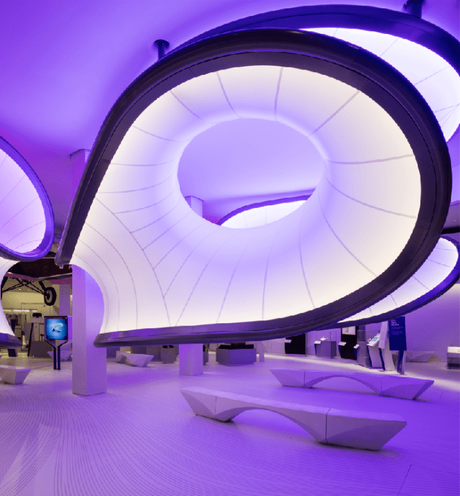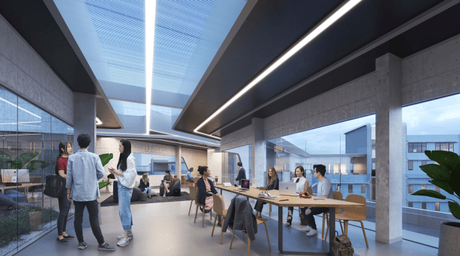Guest post by Bindu Gopal Rao
Zaha Hadid Architects (ZHA) is synonymous with iconic architecture transforming the notions of what can be achieved by continually innovating with advanced design, material and construction innovations.

Founded in 1979 in a single studio room in an old school building in East London, Zaha Hadid Architects (ZHA), has since grown to a global design practice of over 500 staff, with offices in London, Hong Kong, Beijing, and Dubai. The firm evolved over the past four decades under the guidance of late Dame Zaha Hadid’s pioneering vision and continues to create architecture which captures imagination internationally.

Bold and unapologetic, Zaha Hadid spent a lifetime setting up a progressive agenda for architecture and design and was known for her radical de-constructivist approach to design.
Bidisha Sinha, Senior Architect, Zaha Hadid Architects says, “ZHA works within the confines of brief, budget, planning regulations, climate and gravity. What sets us apart is the ability to implement a structured thought process allowing an initial design response to be developed to the level of detail which allows for it to be successfully built.”

Each project delivered pushes the limits of knowledge of design and fabrication aided by our evolving research in computation design and close collaboration with consultants and fabricators, ensuring the ability to conceive and realize architecture beyond the grasp of convention.
ZHA operates at the forefront of new technologies for delivering projects – whether it is with regards to optimizing our workflow by adapting technology across platforms or through our computational research work on material and fabrications.
“Currently in this post-pandemic milieu there has been a hyper acceleration towards digitalization of all aspects of our lives – workplace, social interactions and the usage of our homes. We are seeing a lot of conversations arise on what the new normal will be and how these fundamental changes to our ‘social contracts of behavior’ will give rise to new typologies of architectural spaces – both physical and cyber,” avers Sinha.

Additionally, a move towards smart fabrication which is digitally driven for precision and reduction of wastage as we move towards a more complete circular and sustainable economy is of increased interest. “There is a recognition that artificial intelligence and smart technologies will become key features in the successful resolution of spatial use and in our interaction with our environment. Additionally, a move towards smart fabrication which is digitally driven for precision and reduction of wastage as we move towards a more complete circular and sustainable economy is of increased interest.”

Sinha has recently associated herself with the World University of Design that has set itself an agenda to bring progressive thinking and create a new generation of professionals who are able to adapt and respond to a very rapidly changing industry. “It is important that students learn and unlearn simultaneously and be able to question pre-established norms in order to become effective professionals. I hope my experience of having collaborated as an architectural professional across three different continents at the helm of architectural innovation over the last 20 years, will allow me to guide and support the University Board to deliver the above agenda for the students,” concludes Sinha.
To read more posts from Bindu related to architecture, click here and here.
